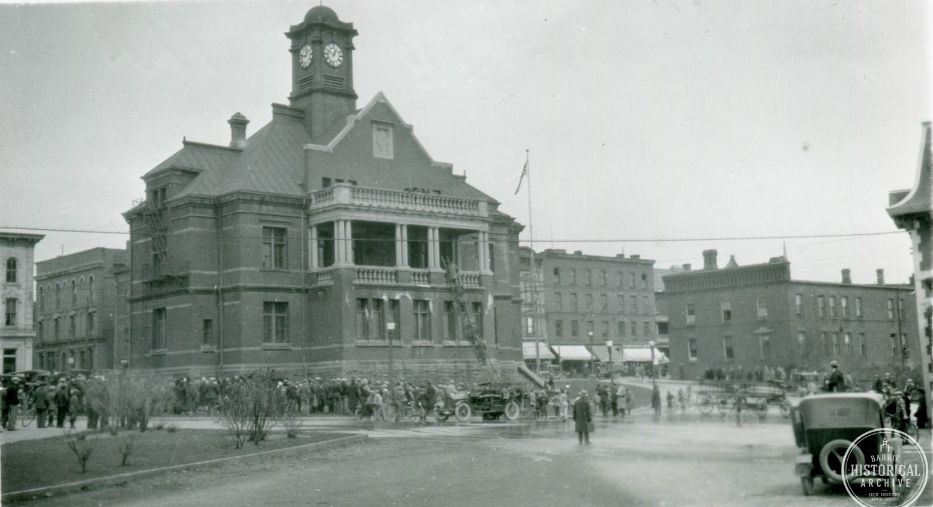They weren’t exactly soldiers, but they were the first women in the modern world to be created officers and allowed to hold a military commission. These were the nursing sisters of the Canadian Army Medical Corps (CAMC).
They were a rarity. Among some 619,000 men who served during the Great War there existed this small group of less than 3,000 women. The standard enlistment papers, crafted with only male recruits in mind, had to be hand altered to say she and her in the appropriate sections.
Candidates for the CAMC were required to be trained nurses, of British citizenship, dignified and of good moral character, fit and between the ages of 21 and 38. They were also expected to be single, widowed or divorced with no children.
Of course, nursing the wounded on the front lines or in convalescent hospitals wasn’t without its perils. Some 58 Canadian nursing sisters are known to have died at the side of their patients. Field hospitals and hospital ships were supposed to be exempt from hostile fire, but that wasn’t always the case.
In the deadliest naval disaster in Canadian history, 234 medical personnel were killed in the deliberate sinking of the HMHS Llandovery Castle in 1918. Not only did the captain of the German U-boat order the torpedo attack, he directed the chasing down of the life boats and the machine-gunning of the survivors.
Lost were all 14 CAMC nursing sisters aboard.
There were some nurses who never came home, for very different reasons, and at least two of those were from Barrie.
Gladys Lettie French was the daughter of Rev. William H.A. French, Rector of St. Thomas Anglican Church in Shanty Bay. Gladys trained at the Royal Victoria Hospital School of Nursing in Barrie.
In 1917, Gladys enlisted in the CAMC at Exhibition Camp in Toronto. Until she departed for training and overseas duties, Gladys had been living on her own in Barrie. Very few women at that time had the ability to live independently and support themselves. Teaching and nursing were the few careers that offered such a possibility.
In England, Gladys worked at the Duchess of Connaught Red Cross hospital at Taplow, Buckinghamshire, Canadian Military Hospital, Basingstoke and lastly Kitchener Military Hospital Brighton, a 2,000-bed facility that was a converted workhouse.
War doesn’t end for nurses no more than it does for severely injured men who require years of treatment and rehabilitation. Many nurses carried on in their roles long after the battlefields went quiet and worked in places like South Toronto Orthopaedic Hospital, where Gladys found post-war employment.
Gladys wasn’t finished yet. She left for the United States not long after the war and lived with her sister in New Jersey where she carried on her nursing career, later becoming an Essex County health inspector.
In many ways, Gladys French was not unlike Agnes Alice Kennedy. This independent young woman was the daughter of Alexander Kennedy, a McDonald Street blacksmith. Agnes had been working as a stenographer for the Hewson and Creswick lawn firm on Dunlop Street before she found her true calling.
Taking a slightly different path than her fellow nurse, Gladys French, Agnes Kennedy took her nursing skills directly to the U.S., as it was at the Farrand Training School for Nurses in Detroit that she got her education. Naturally, she signed up for service in the American Army Nurse Corps when America joined the war in Europe.
Agnes served at Base Hospital 17 in Dijon, France for the duration of the Great War and continued her profession in various hospitals throughout the United States. Her last position was at the Veteran’s Facilities Hospital in Los Angeles, Calif. She passed away where she worked after becoming a patient there herself.
Agnes Kennedy was given a military funeral at the Veteran’s Chapel in Los Angeles. Her sister, Kathleen, travelled from Canada to attend the funeral and received the American flag that had draped her sister’s casket.
Agnes now lies with other service men and women at Los Angeles National Cemetery, resting place of members of the armed forces.
Each week, the Barrie Historical Archive provides BarrieToday readers with a glimpse of the city’s past. This unique column features photos and stories from years gone by and is sure to appeal to the historian in each of us.



